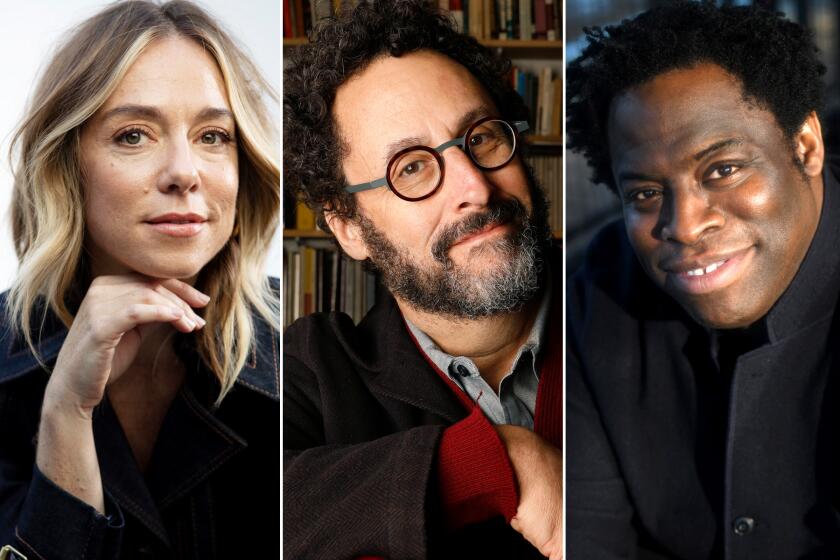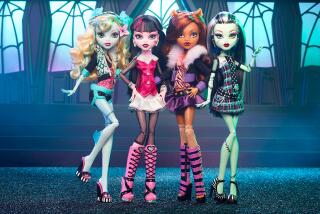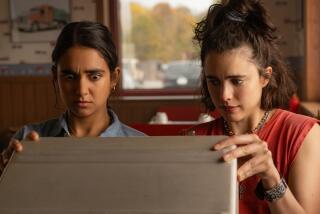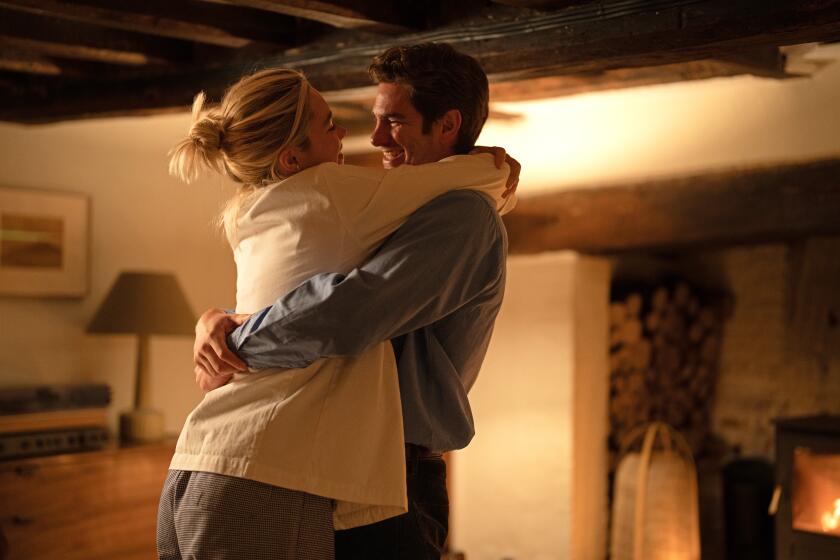The doll for ‘Lost Daughter’ needed to be simple. What they got was Chucky revisited
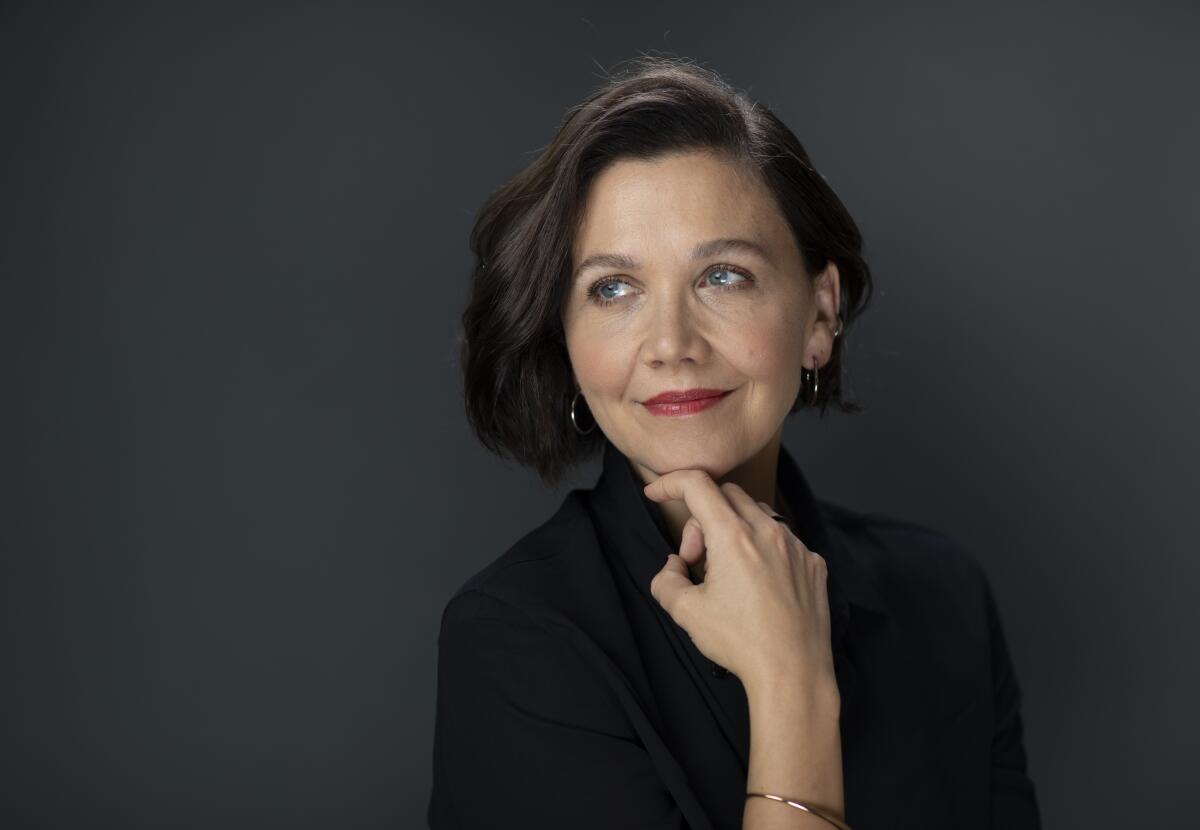
We needed a doll.
I wanted an off-the-shelf doll from Toys R Us or Target — cheap, mass-made, a dime a dozen. I wanted it to be a doll that could fall into any of our hands, a doll we recognize. Because what makes the doll in “The Lost Daughter” valuable is what our characters imbue her with.
But apparently we couldn’t buy one. According to my prop master, no one in their right mind would want their toy brand associated with our strange film. So he said we had to have one made.
This made me nervous. I didn’t want her to look handmade and one-of-a-kind — not in an exquisite and expensive porcelain and perfectly painted way, or in an arts and crafts, homespun, hippie way. I wanted an “every-doll,” meaningless and cheap except in the hands of our heroines.
But what could I do? I was a first-timer, and this is what the experts advised. So I waited for our handmade doll to arrive. In the meantime we prepped: We had COVID meetings and budget meetings; I cast day players; I scouted and shot listed.
One day, on a scout looking for “Leda’s Seaside Apartment,” I stopped, stunned. Sitting on an antique, dusty daybed, in a shaft of sunlight — was the Perfect Doll. She had a plastic head and arms and legs, but her body was made of cloth, so her head drooped strangely to one side. She had a green polka-dotted piece of cloth draped around her like a makeshift dress and an old scrunchie in her dirty hair, the work of a child for sure.
In their own words: Tony Kushner, Rebecca Hall, Jeymes Samuel and other screenwriters take us on a journey through writing their film scripts.
She was looking at me. And at the same time, of course, she wasn’t. She was exactly right.
But she wasn’t mine. She belonged to the little girl in the apartment. I didn’t have to tell myself twice that I couldn’t take the girl’s doll.
So we moved on. We kept scouting and prepping and welcoming actors — and the morning before we needed the doll, she arrived …
How to express my fear and disappointment? The doll was terrifying — a strange orange color that reminded me, just slightly, of Chucky. I could almost see the thumb marks used to mold her strange face. Her eyes were painted with a kind of black eyeliner, making her look like an adult trapped in the body of a baby. With a doll, even the slightest distortion in facial expression feels gruesome.
I spent a moment with myself to see if I could make it work. I didn’t want to upend everything — the money we had spent, the time and feelings of the people who had made it. But there was nothing to be done. It would have ruined the movie.
So I called my producers and Inbal Weinberg, my production designer. This won’t work. We have 24 hours. We need a new doll. What are we going to do?
It was Inbal who said what everyone was thinking. Let’s get that girl’s doll from the location scout.
The meta nature of this was not lost on me. A group of grown women trying to take this little girl’s toy. But we wanted it. And at this point, we really had to get it. We were shooting with the doll in less than two days.
OK, I said. But if this is that little girl’s favorite object — her precious doll, her future daughter and her stand-in mother and her need and comfort and hunger and budding desire and oppression all rolled into one — well ... then we really shouldn’t take it. It’s too much like our movie. It’s too strange. And cruel.
Inbal said, “Well, let’s ask her.”
So we did. Please. We are adults. We will find another way if this doesn’t work. But could it possibly work? Not, of course, if this is a priceless object, mythically meaningful. But if not, could we possibly use your doll? Any chance we could buy it? What could it possibly be worth in dollars? Its value, we understand, is in some other economy. The economy of the heart, the unconscious …
I was not a part of this phone call. That’s what I imagined, and dreamed. In fact, when asked if we could use her doll — if the little girl could bear parting with it, maybe in exchange for something else? She said: “Sure. I’ll take an iPad.”
And we were off.
More to Read
From the Oscars to the Emmys.
Get the Envelope newsletter for exclusive awards season coverage, behind-the-scenes stories from the Envelope podcast and columnist Glenn Whipp’s must-read analysis.
You may occasionally receive promotional content from the Los Angeles Times.
